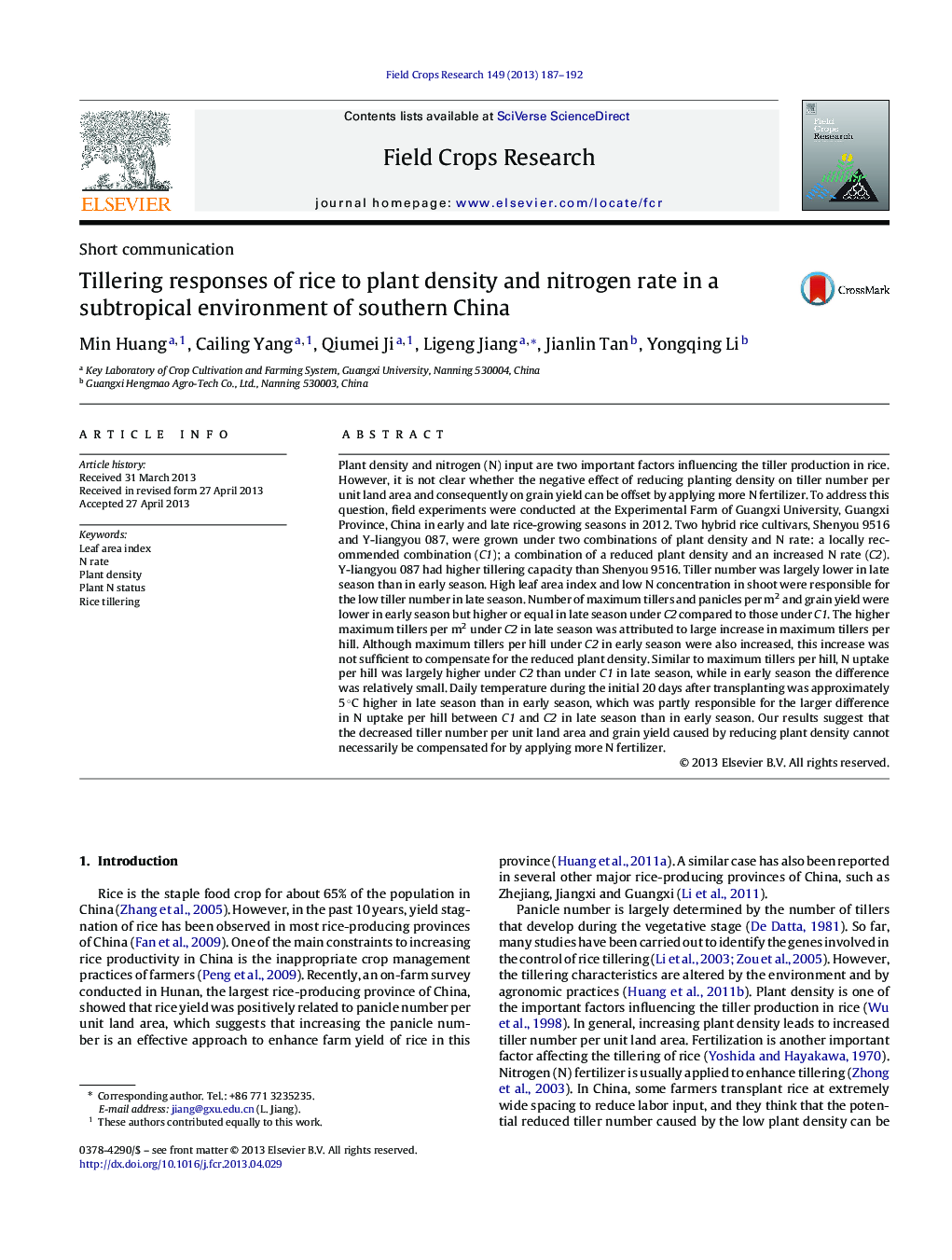| کد مقاله | کد نشریه | سال انتشار | مقاله انگلیسی | نسخه تمام متن |
|---|---|---|---|---|
| 6375289 | 1624714 | 2013 | 6 صفحه PDF | دانلود رایگان |
عنوان انگلیسی مقاله ISI
Tillering responses of rice to plant density and nitrogen rate in a subtropical environment of southern China
ترجمه فارسی عنوان
پاسخ های تیلرز برنج به میزان تراکم و میزان نیتروژن در یک محیط نیمه گرمسیری جنوب چین
دانلود مقاله + سفارش ترجمه
دانلود مقاله ISI انگلیسی
رایگان برای ایرانیان
موضوعات مرتبط
علوم زیستی و بیوفناوری
علوم کشاورزی و بیولوژیک
علوم زراعت و اصلاح نباتات
چکیده انگلیسی
Plant density and nitrogen (N) input are two important factors influencing the tiller production in rice. However, it is not clear whether the negative effect of reducing planting density on tiller number per unit land area and consequently on grain yield can be offset by applying more N fertilizer. To address this question, field experiments were conducted at the Experimental Farm of Guangxi University, Guangxi Province, China in early and late rice-growing seasons in 2012. Two hybrid rice cultivars, Shenyou 9516 and Y-liangyou 087, were grown under two combinations of plant density and N rate: a locally recommended combination (C1); a combination of a reduced plant density and an increased N rate (C2). Y-liangyou 087 had higher tillering capacity than Shenyou 9516. Tiller number was largely lower in late season than in early season. High leaf area index and low N concentration in shoot were responsible for the low tiller number in late season. Number of maximum tillers and panicles per m2 and grain yield were lower in early season but higher or equal in late season under C2 compared to those under C1. The higher maximum tillers per m2 under C2 in late season was attributed to large increase in maximum tillers per hill. Although maximum tillers per hill under C2 in early season were also increased, this increase was not sufficient to compensate for the reduced plant density. Similar to maximum tillers per hill, N uptake per hill was largely higher under C2 than under C1 in late season, while in early season the difference was relatively small. Daily temperature during the initial 20 days after transplanting was approximately 5 °C higher in late season than in early season, which was partly responsible for the larger difference in N uptake per hill between C1 and C2 in late season than in early season. Our results suggest that the decreased tiller number per unit land area and grain yield caused by reducing plant density cannot necessarily be compensated for by applying more N fertilizer.
ناشر
Database: Elsevier - ScienceDirect (ساینس دایرکت)
Journal: Field Crops Research - Volume 149, 1 August 2013, Pages 187-192
Journal: Field Crops Research - Volume 149, 1 August 2013, Pages 187-192
نویسندگان
Min Huang, Cailing Yang, Qiumei Ji, Ligeng Jiang, Jianlin Tan, Yongqing Li,
